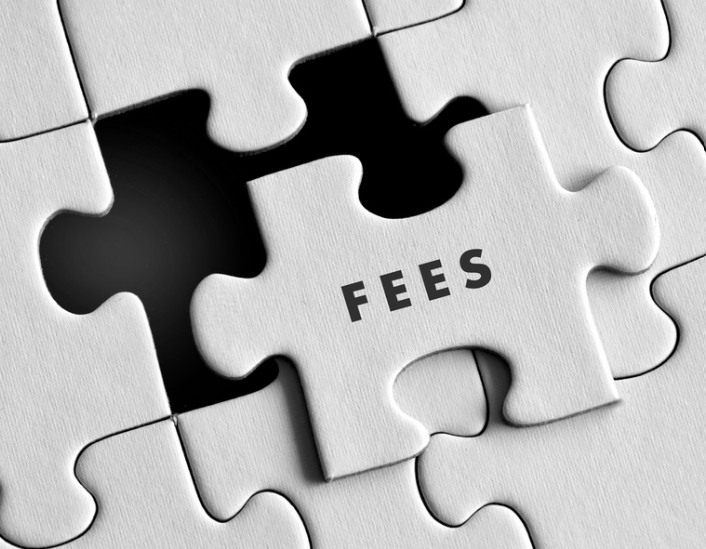For many Americans, it felt like life was put on hold when the COVID-19 pandemic began. In most cases, that was a bad thing. People had to stop eating out, going to concerts, working in offices, and even sending kids to school, and businesses across nearly all market sectors suffered.
There is no denying that business owners and consumers alike are happy to have the worst of the pandemic restrictions behind them. However, there was at least one silver lining for businesses. The credit card networks Visa and MasterCard were planning to increase their interchange fees in April 2020, but since it was clear that businesses were already struggling, the two networks opted to delay the change until April 2022. The time eventually came for merchants to find ways to make up for higher processing fees. Both networks went through with their delayed increases in interchange fees in April 2022, so business owners need to find ways to generate more revenue with every transaction to offset the additional costs.
What Are Interchange Fees?

Since not all entrepreneurs and newcomers to business ownership are well-versed in credit card processing practices, let’s start at the beginning with a brief introduction to interchange fees and how they work. In simple terms, interchange fees are paid to banks by merchants to cover the costs associated with specific categories of credit and debit card transactions.
Each category has a different interchange rate associated with it, but what they all have in common is that these rates are non-negotiable. The interchange rates associated with some categories of transactions are less than 1%, while others can exceed 3%. Both Visa and MasterCard publish interchange fee tables to clarify the rates for each category, but things can still get complicated.
How Do Interchange Fees Work?
All credit or debit cards are backed by an issuing bank. When a merchant accepts a card payment, the bank routes the funds to the merchant and the bill to the consumer. Simply stated, the card networks (Visa, MasterCard, etc.), the bank, and other participants in the process charge “Interchange Fees” and possibly other related fees for their services. The merchant receives a monthly bill for the fees accrued during the prior month.
The sum of all merchant service fees tend to be near 3% of gross sales. It’s important to note though, that if you operate on a 10% margin, 3% in fees reduces your net profit by 30%! Example: For $100,000 in sales by card, you’ll pay about 3% in fees ($3,000) and your 10% margin will yield $10,000 in net profit. Eliminating the $3,000 in fees increases your net profit to $13,000, a remarkable 30% increase!
Interchange fees will significantly affect your bottom line. This is why solutions such as the Xpress-pay Site Fee Program have become wildly popular.
Factors That Determine Interchange Rates
There are dozens of interchange rates, and they vary based on the category of the transaction being performed as well as other factors. In general terms, interchange fees are determined by the level of risk assumed by the acquiring bank. If a transaction carries a higher risk of fraud, the interchange rate associated with it will be higher. Factors that influence interchange rates for Visa and MasterCard include:
Type of Card
Debit cards have much lower interchange fees than credit cards, which makes sense. Debit card transactions are only approved if the buyer has enough money in the associated account. Both Visa and MasterCard debit cards have much lower rates than the two financial service behemoths’ credit cards.

Credit Card Rewards
Premium cards that offer rewards almost invariably have the highest interchange fees. The reasoning behind the difference in rates associated with standard vs. rewards cards is that the interchange fees can be used in part to cover the cost of offering rewards. The same applies to corporate credit cards.
Transaction Location
In-person transactions generally have lower interchange fees than online payments. Again, the risk of fraud is lower when people pay in person rather than using credit cards to make online payments because it’s more difficult to use stolen cards.
Type of Business
Every merchant who processes credit card payments receives a merchant category code based on his or her industry. Each comes with a different interchange rate. The rates for each category code also varies by the acquiring bank.
What Changed in 2022?
All of the basics remain the same. Fees however, have increased for specific merchants and categories of transactions. Both the Visa and MasterCard fee increases apply primarily to online purchases made with consumer credit cards. MasterCard however, plans to increase its fees on over a dozen different in-store purchase categories.
Some businesses will be harder hit by the fee increases than others. Small to mid-sized supermarkets, for example, will wind up paying higher interchange fees on MasterCard-network rewards cards, as will general retailers with brick-and-mortar establishments. MasterCard plans to generate an additional $330 in interchange fees in the coming year compared to the year preceding the fee hike.
Though much of the focus in the financial world has been on industries and types of businesses that will suffer as a result of increased interchange fees, there is a silver lining for some retailers. MasterCard plans on lowering the fees charged to merchants with transactions below $5. Daycare facilities, casual restaurants, hotels, and some of the other businesses that were hardest hit during the pandemic will also see lower costs.
Visa is following suit to lower fees for small merchants that process $250,000 or less in consumer credit card transactions each year. The credit card processor also plans to exempt some categories, which will include grocery stores, convenience stores, gas stations, and restaurants, from the increase in interchange fees. Overall, the planned changes should lower fees by around 10% for about 90% of businesses.
How Can Others Avoid the Fee Hike?

While it’s true that not every business will wind up paying more as a result of the upcoming fee increases, many will. Though the interchange fees charged by credit card processors are non-negotiable, there are some ways to reduce or even eliminate them. The following methods are useful in keeping interchange and other credit card processing fees low.
Switch to a Solution that Uses a Site Fee Model
If you own a business that accepts Visa and MasterCard payments, it’s best not to rely on exemptions cited by the company’s spokespeople. There is an easier and more reliable way to make sure the business’s bottom line won’t suffer as a result of future rate hikes. Xpress-pay has achieved an impressive $0 impact, so its business clients will not see any increase in their interchange fees this year.
The reason Xpress-pay can keep its fees so low while offering free accounts to both new and existing clients is that they utilize a site fee model. Xpress-pay charges this nominal fee for the use of its services, with most clients passing this fee on to customers to offset the cost of processing transactions. Unlike major credit card companies’ interchange fees, the site fee will not change in April. It will remain low for everyone and can still be passed on to customers.
Use Address Verification Systems
Brick-and-mortar retailers don’t always have the luxury of simply switching to a new payment processor and refusing Visa or MasterCard payments, but they can still keep fees low. Implementing an address verification system is a good way to prevent fraud, and both Visa and MasterCard will lower exchange rates for businesses that use these tools.
Don’t Wait to Settle
Settling batches every day can help to keep interchange rates low. Waiting to settle will have the opposite effect. You’ll be downgraded and can wind up paying up to 0.50% more in interchange rates. The reasoning is simple: when retailers wait for days to settle, their customers are more likely to get confused and contest charges on their statements.
Avoid Manual Entries
The manually keyed-in entry of credit card information comes with the highest possible processing rate. Again, it’s an issue of fraud prevention. It’s harder to prevent fraud when card numbers are keyed in by employees instead of being swiped. If a customer’s card isn’t working, you should ask for another payment method instead of keying in the number.
Surviving the Upcoming Fee Increase
Now that merchants have an idea of how online and in-person interchange fees work, it’s time to decide how to move forward. Most brick-and-mortar retailers won’t be able to refuse MasterCard and Visa payments entirely, but they can keep associated fees low by following the advice offered above. Online merchants can switch to Xpress-pay to maximize their savings without worry of paying ever-increasing interchange fees or having to refuse customers who want to pay with credit cards.
To learn more about this, and all Xpress-pay can do for your organization, schedule a call with one of our team members at (607)753-6156, email us at sales@xpress-pay.com, or enroll now at https://info.xpress-pay.com/sign-up/

